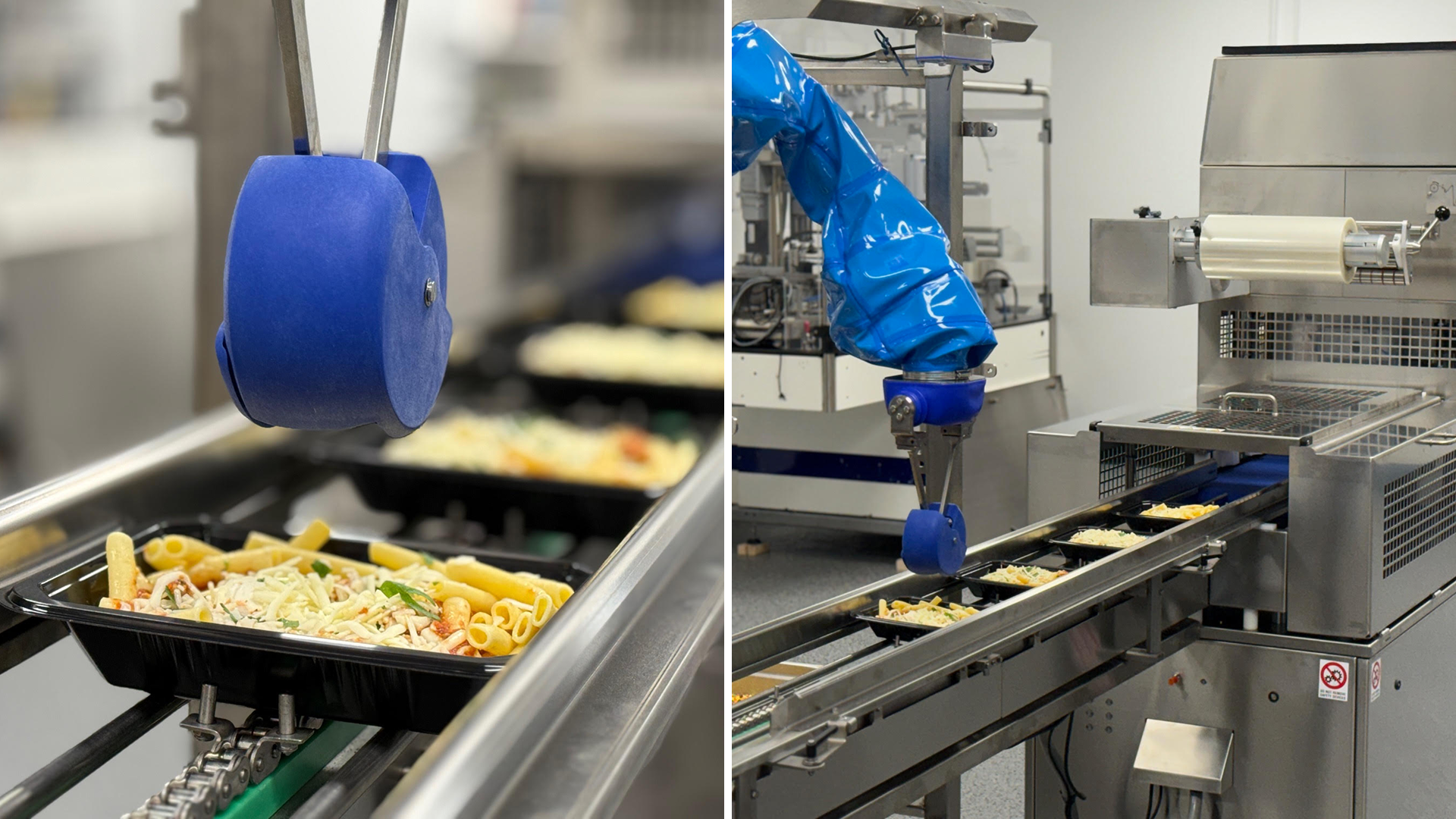We are excited to share that our ingredient capabilities now include very sticky ingredients like mac and cheese, peanut butter, cream cheese, beef birria, and chipotle chicken.
Highly sticky, viscous ingredients present unique challenges in meal assembly automation. Their thick, sticky texture makes them difficult to release cleanly from Chef robot utensils as they cling stubbornly to any surface they come into contact with. This can lead to inconsistent deposits and excess spillage.
We’ve expanded our ingredient portfolio with several new additions recently, including leafy greens and curries. Now, we’ve solved the problems that have historically made working with sticky ingredients a difficult undertaking.
How our robots learned to serve “super sticky stuff”
Stickiness, as with most food characteristics, is a spectrum. For many ingredients—think of a viscous sauce or wet baby corn—Chef’s self-clearing utensils are sufficient. In those cases, our utensils work similarly to people scooping an ingredient with an ice cream scoop. For other, stickier ingredients like mashed potatoes, we leverage Chef’s 6-DOF robot arm to create a high-impulse eject motion that forces the food out with a sudden and high-force downward motion. This motion is comparable to a person flicking their wrist on the edge of a burrito bowl to serve guacamole into it. In other words, for most ingredients, Chef uses either the self-clearing utensils or the robot arm to eject food. Unfortunately, there’s a third group of ingredients, like peanut butter, that are sticky enough for neither of those solutions to work.
The Chef team realized that the key to releasing these super sticky foods is vibration independent of the utensil and robot arm. To create a vibrating mechanism, we took inspiration from industrial agricultural pneumatic vibrators, which are small devices powered by compressed air. We mounted the vibrator onto the robot arm’s end effector, which allows it to work with any Chef utensil. Inside it is a fan with an off-center weight. When air flows through the vibrator, the weight shakes, which causes a vibrating motion. This mechanism works in tandem with our software, which tells the Chef robot to send one pulse of air through the vibrator for each deposit. The vibrator shakes the attached utensil just enough to release an ingredient cleanly without flinging it. Depending on the ingredient, we can combine this vibrating mechanism with our self-clearing utensils and the robot arm’s eject motion to achieve optimal results.
Chef robots are actively running super sticky ingredients in production for customers like Amy’s Kitchen and Avatar Foods. At Amy’s Kitchen, we are spreading mac and cheese inside a tray. At Avatar Foods, we are scooping and cleanly placing beef birria and chipotle chicken. Regardless of which utensil a sticky ingredient calls for, Chef robots can utilize the vibrating mechanism to ensure consistent deposit weights and accurate placement while minimizing spillage.
Interested in learning more about Chef’s capabilities? Contact us to discover the full range of ingredients we are serving for industry-leading customers like Amy’s Kitchen, Avatar Foods, Chef Bombay, Sunbasket, and Cafe Spice.




